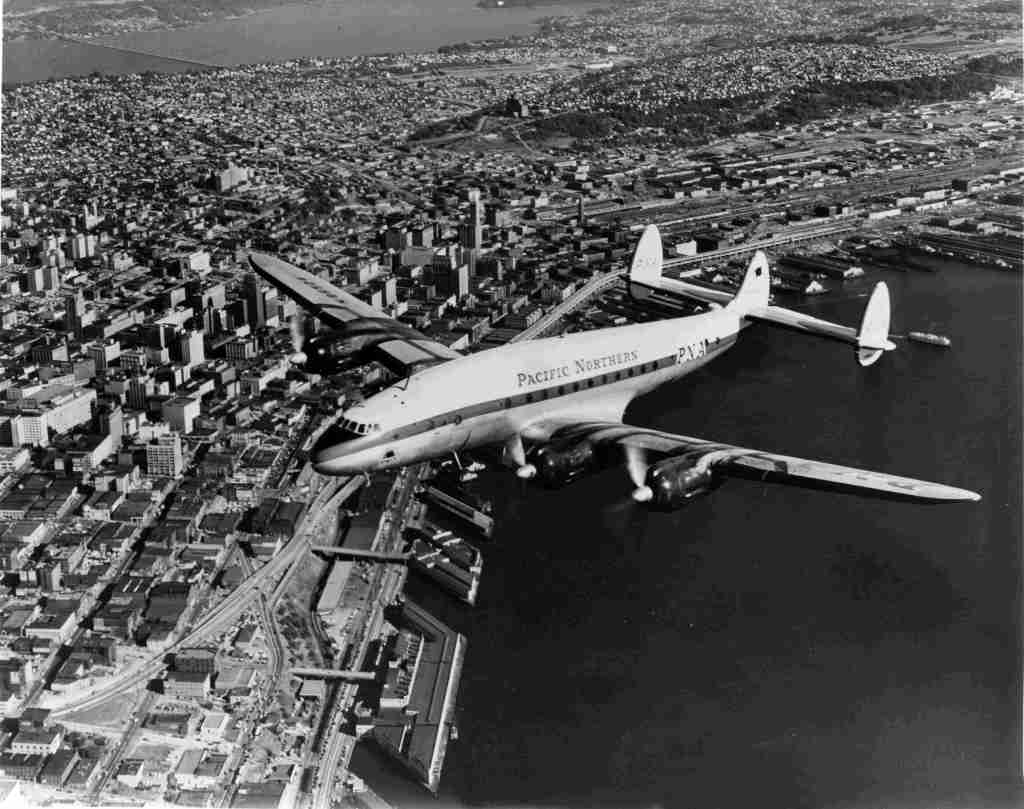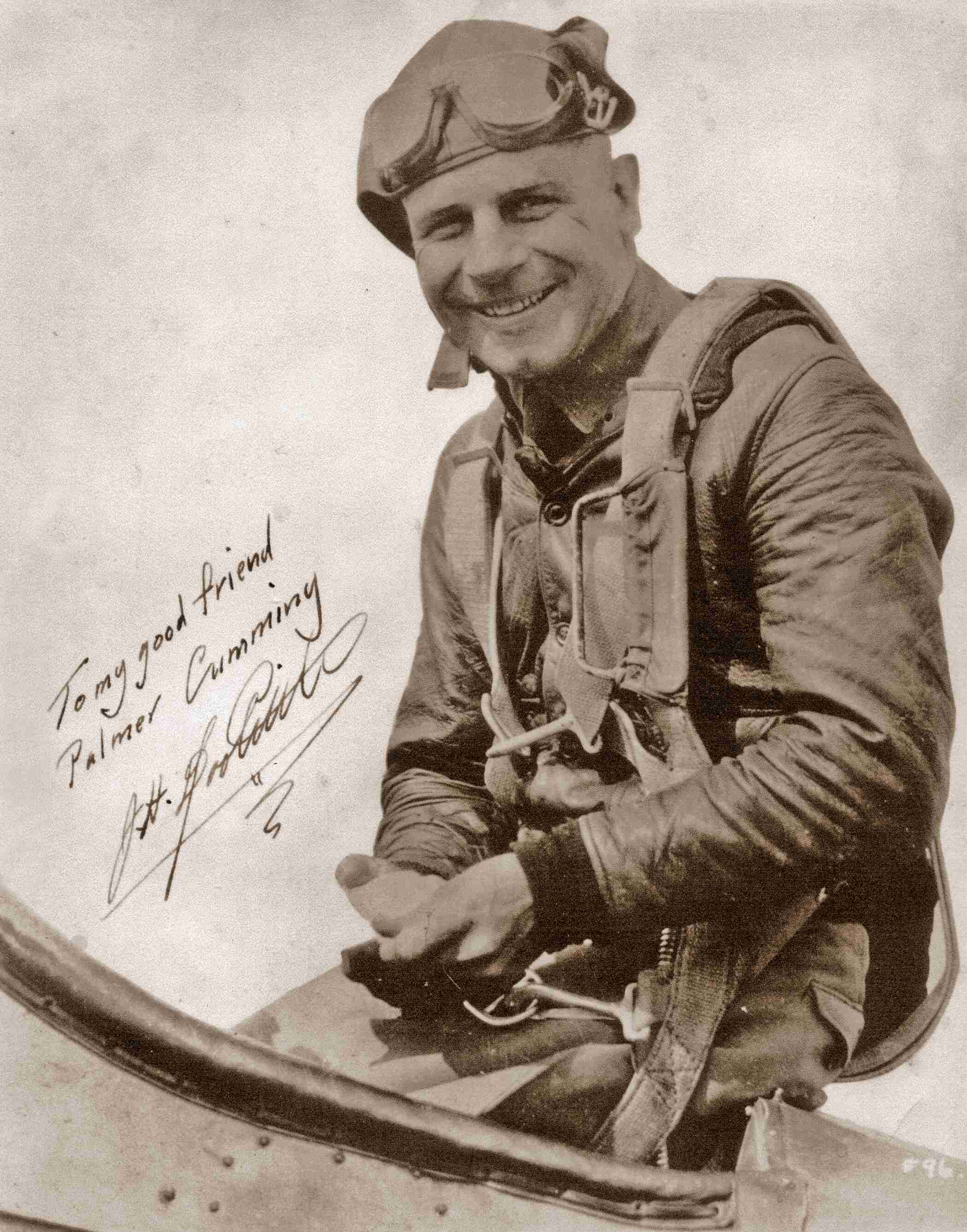The “Flying Whale”
Despite its unflattering name, the Martin B-10/12 was an absolutely outstanding aircraft for its time. This is especially so when one considers the bombers it replaced: The Keystone series with its (standard for the period) fabric-covered, open cockpit and double-winged aircraft. Whereas most aircraft eased into the transition from the earlier designs (thinking of the P-26), Martin dispensed with the in-between and went next generation.
Travel Airs
“Miss Sonic Boom”

According to this photo’s caption, actress Debra Paget was in Las Vegas, and when asked if she would like a tour of nearby Nellis AFB she simply could not resist. (Obviously, she would only take part in the tour if she could wear a bathing suit and high heels.) Upon her arrival, the Nellis pilots were so impressed with their visitor that they immediately named her “Miss Sonic Boom.” Miss Paget/Sonic Boom was quite the starlet back in the day featuring in films like The Ten Commandments and a movie opposite Elvis. She is now 90 years old.
The “Ideal costume for Aviator”

Such survival suits are still in use today with the Air Force, Navy, etc. (“Poopy Suits,” we called them). This ad poses a bit of a question: what type of mechanical difficulties might necessitate “getting into cold water” some “10 miles off coast” to effect repairs to your aircraft? You would be in the open sea; what are you going to fix bobbing around like a cork? But this ad dates from 1919; flying machines had a bad habit of suddenly not working, and one had to be ready for anything.
The “Aluminum Overcast”
An aluminum suppliers dream, a single B-36 rolled and flattened to the thickness of household aluminum foil, would cover over 20 million square feet of property. Many thanks to Mr. Del Chasteen, a good ol’ Texas boy, who supplied most of the photos.
General Frank Lackland
“Lackland” – anyone who has ever served in the USAF knows that name. Billed as the “Gateway to the Air Force,” Lackland AFB in Texas is home to USAF basic training and a host of academic and technical schools. The base’s namesake is seen here, Brigadier General Frank D. Lackland. Like many Air Corps generals, Lackland got his start as a pre-WW1 infantry officer before switching over to the Aviation Section of the Signal Corps. After serving in various capacities, General Lackland became commander of the 1st Wing at March Field in 1939. These photos date from that period. He was likable and friendly, and regardless of rank, he inspired everyone he commanded. It is, therefore, only fitting that the base which introduces recruits to the Air Force is named in his honor.
94th Pursuit Squadron
XB-15 Bomber Bedecked with Bathing-suited Bronx Beauties
Update: Thanks to Paul Martin, author of the multi-volume history Beneath The Shadow of Wings, Untold Stories from Mitchel Field, Long Island, we now learn how dozens of bathing suit-clad women came to be pictured cavorting atop the XB-15. The year is 1940, and Major Caleb V. Haynes and his crew had just been awarded the Mackay Trophy for their exemplary 1939 XB-15 flight that brought relief supplies to an earthquake-devastated Chile. Capitalizing on that fame, the XB-15 made numerous well-publicized visits, including one to Mitchel Field on September 13, 1940.
Enter “Billy Rose’s World’s Fair Aquacade” and his “beautiful aqua-belles”. The “Aquacade” had been a smash hit at the 1939 New York World’s Fair (Johnny Weissmuller of “Tarzan” fame was one of the stars), and in a massive public relations/recruitment event, dozens of these “aqua-belles” were invited to join Mitchel Field officers for a day of fun in the sun while standing atop the Air Corp’s most giant bomber.
Want to learn more about Mitchel Field’s history? Visit Paul Martin’s website https://mitchelfield.weebly.com/for hundreds of great photos and information (you can order his books there too).
Mather Field, April 1930
The Air Corps loved staging mass aerial demonstrations where – not content with a variety of aircraft in large numbers – entire squadrons (or a major portion of them) would oftentimes take part in the festivities. Such is the case at Mather Field, California, April 3-4, 1930, where flightline promenaders are treated to the sight of eight O-1 Falcons of the 14th Bombardment Squadron and a host of P-12s. The next day came the great fly-by with Keystone LB-6s and Curtiss B-2s.
Rhein-Main Air Base, 1952-53
A few photos from a USAF air policeman during his tour at Rhein-Main Air Base, Germany, during the early 50s. The Ceskoslovenské Aerolinie DC-3 was flown by Mira Slovak when he defected to the West in March 1953. Later, a famed air racer, champion hydroplane skipper, and all-around dare-devil, Slovak was piloting this DC-3 on a routine flight when he locked his copilot out of the cockpit, dove beneath radar coverage, and slipped into West Germany. The aircraft sat at Rhein-Main while the diplomatic niceties were worked out before returning home to Czechoslovakia. (It crashed a few years later.)
The photos of aircraft wreckage are sad reminders of a fateful day in May 1953, when an F-84 of the 22nd Fighter Bomber Squadron plowed into a formation of C-119s, causing two of them to crash as well as the F-84. Although the Thunderjet pilot who caused the mayhem parachuted to safety, eight of the 10 crewmen in the two C-119s were not as fortunate.
North to Alaska


Climbing out of Seattle-Tacoma Airport on its scheduled late afternoon departure time in the Spring of 1959, Pacific Northern Airlines Constellation wings its way over downtown Seattle. Its final destination is Anchorage, but with a few stops along the way: Ketchikan, Juneau, Yakutat, and Cordova. Cost of the ticket from Seattle to Anchorage: $165.
December 7, 1941
Bombing Three, USS Saratoga 1939


Bombing Three (VB-3) – the “High Hatters” put on a good show for the camera in early 1939.
Peter O. Knight Airport, 1938

Still busy today with general aviation, Peter O. Knight opened in 1935 as Tampa’s principal airport and remained so until 1945. One of many airports built under the auspices of the Works Progress Administration (WPA), the field boasted multiple paved runways, could handle seaplanes, and had a very nifty art-deco terminal seen in the foreground (unfortunately, now long-gone). When this photo was taken in March of ’38, the main attraction was the bevy of Air Corps planes dotting the field: B-18s, P-26s, P-35s, and a lone B-10.
92nd Fighter Squadron, 1947

As the jet aged dawned other USAAF squadrons were transitioning from props to “stovepipes” (as the jet engine was commonly called), the 92nd in Hawaii was defending the islands with the tried and true P-47 Thunderbolt. In fact, the “Jug” provided Hawaii’s air defense until well into the 1950s. This is not at all surprising: jets were needed in Korea, and besides, were someone to launch an aerial attack on Hawaii, it could not have been with jets (there were as yet no Soviet jet bombers, and the MiG-15 posed no threat to far-off Hawaii).
Master of the Calculated Risk

Early autographed photo of Jimmy Doolittle from the time he was speed champion of the world.
The BT-9 and BT-14
18th Fighter Interceptor Squadron
Post-War Props
The USAF’s first decade
Northrop’s Flying Wing
U-2 in Panama, 1966

Men of the 100th Strategic Reconnaissance Wing (SRW) on deployment to Albrook AFB, Panama Canal Zone, pose for a group photo before heading home. The reason for their trip to Albrook was classified: they were monitoring French nuclear tests in the South Pacific. When this photo was taken in ’66, the 100th SRW was new to the “spy plane” world – they had just gained the mission, personnel, and aircraft of the deactivated 4080th SRW (the men are wearing that patch, not the 100th).
Thunderjets and Streaks
Connecticut National Guard O-47

































































































































